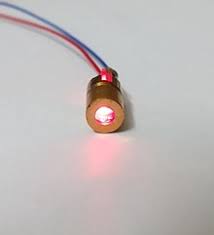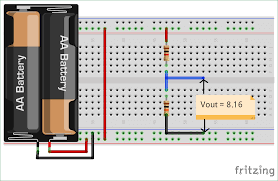
Physics Project On Laser Security System For Class 12th CBSE
Introduction
The Significance of Security Systems
In today’s ever-changing landscape, security systems stand as stalwart guardians, protecting people, possessions, and information across diverse environments, from cozy homes to bustling offices and sprawling industrial complexes. The relentless surge in concerns regarding unauthorized access and potential threats has thrust security systems into the spotlight, making their evolution and innovation all the more critical. These systems not only grant us peace of mind but also deter potential intruders from testing our defenses.
Unveiling the Laser Security System
Enter the Laser Security System, a modern marvel that capitalizes on laser technology’s prowess to fortify security. This undertaking seeks to unveil a fully functional laser security system, adaptable to a myriad of security needs. By harnessing the power of a laser diode and a light-dependent resistor (LDR), this system becomes a vigilant sentinel, detecting intrusions and reacting with precision.
The Quest at Hand
Our foremost aim with this project is to design and assemble a laser security system, not as a mere prototype but as a tangible testament to laser technology’s real-world applications in bolstering security measures. This system’s capabilities extend beyond mere detection; it is geared to trigger an alarm when the laser beam is interrupted, ensuring swift response. In our journey through this project, we intend to:
- Offer a pragmatic demonstration of the laser security system’s functionality.
- Illuminate the theoretical underpinnings of laser diodes, LDRs, and the intricacies of alarm circuitry.
- Showcase the adaptability of this system in addressing real-world security challenges.
- Highlight the ever-increasing importance of security systems in the fabric of modern society.
Materials Required
- Laser Diode: The vanguard of our system, emitting a precise and unbroken laser beam.

- Light-Dependent Resistor (LDR): Serving as the vigilant eyes of our system, it detects shifts in light intensity.

- Buzzer or LED: Our trusty alarm, ready to sound the alert or shine a beacon when the laser’s domain is breached.

- Voltage Divider Circuit Components: Comprising resistors and a potentiometer, these elements construct the voltage divider circuit, translating LDR resistance into a measurable voltage signal.

- Power Supply: The life force, furnishing the necessary voltage and current to drive the laser diode and alarm circuit.

- Breadboard and Connecting Wires: The architects of electrical connections, bringing our circuit to life.

Theory and Working Principle
- Soldering Iron and Solder: For precision work in joining components.
- Glue or Adhesive: To secure elements in place.
- Tape: For neat and temporary fixes.
- Wire Cutters: Crafting clean connections.
- Screwdriver (if required): To assemble components securely.
- Multimeter: Our faithful companion for circuit testing and calibration.
Construction
The Basic Concept: At its core, this system hinges on one simple principle—interrupting a laser beam to trigger an alarm. Its primary players include the laser diode, LDR, and alarm indicator (buzzer or LED).
Laser Diode: Our emissary of light, it projects an unbroken laser beam across the secured area, forming an invisible fortress to be guarded.
Light-Dependent Resistor (LDR): Positioned at the opposite frontier, the LDR serves as our vigilant sentinel, ceaselessly measuring ambient light intensity. When bathed in the laser’s glow, its resistance soars.
Buzzer or LED: This is our sentinel’s call to arms. As an intruder crosses the laser beam, the LDR’s resistance wanes due to the interruption of laser light. This resistance shift prompts the alarm—either sounding the buzzer or setting the LED ablaze—as a sign of potential breach.
Voltage Divider Circuit: The quiet orchestrator behind the scenes, converting fluctuating LDR resistance into a discernible voltage signal, ready to awaken the alarm.
Alarm Activation: The pivotal moment arrives when the LDR’s resistance dips below a predetermined threshold, signaling the breach as the laser’s cocoon is pierced.
Testing and Calibration
Assembling the Laser Setup
Our journey commences with the meticulous assembly of the laser components, the cornerstone of our security endeavor.
Step 1 – Laser Diode Mounting
Begin by securely affixing the laser diode to one extremity of the wooden or cardboard base. It’s imperative that you ensure alignment with the Light-Dependent Resistor (LDR) positioned at the opposite end.
Use a steadfast adhesive or glue to bond the laser diode in place. Exercise caution to prevent any hindrance to the laser’s emission path.
Step 2 – Laser Diode Meets Power Supply
Now, it’s time to grant our laser diode the vitality it craves. Establish a connection between the laser diode and the power supply unit. Make doubly sure that the voltage and current supplied align precisely with the diode’s specifications. Be vigilant in executing these electrical connections while adhering to stringent safety precautions.
Crafting the LDR Assembly
Next, we turn our attention to the Light-Dependent Resistor (LDR) assembly, the vigilant guardian of our security realm.
Step 1 – Prudent LDR Placement
Place the LDR at the far end of the base, ensuring its gaze remains unwaveringly locked onto the laser diode. This alignment isn’t mere formality; it’s the essence of our system’s proper functioning.
Step 2 – Forging the Voltage Divider Circuit
Now, behold the voltage divider circuit, the mystical alchemist that transmutes shifts in LDR resistance into a tangible voltage signal. Assemble it by connecting resistors and a potentiometer in the prescribed configuration.
Pay meticulous attention to detail to ensure that the voltage divider circuit bridges the gap between the LDR and the accurate measurement of resistance changes.
Enhancing Sensitivity (If Desired)
Should the quest for heightened sensitivity beckon, you might opt to incorporate an amplification circuit. This circuit bestows the power to magnify voltage output variations from the voltage divider, rendering our system exquisitely responsive to interruptions in the laser’s unyielding path.
Crafting the Alarm Mechanism
Our vigilant guardian needs a voice. The alarm assembly comes next.
Step 1 – Connecting the Buzzer or LED
Forge the connection between the buzzer or LED and the output of the LDR circuit. Ensure these connections are unwavering, poised to burst into action at the faintest whisper of a laser beam breach.
Step 2 – Breathing Life into the Alarm
It’s the moment of truth. Design the alarm trigger mechanism to be acutely attuned to fluctuations in the output signal from the LDR circuit. As the LDR’s resistance dips, signaling the intrusion-induced interruption of the laser’s steadfast path, the trigger mechanism springs to life, its alarm echoing like a sentinel’s cry, alerting you to potential intrusions in your sanctum.
Results and Observations
Putting Our System to the Test
With our laser security system’s physical construction complete, it’s time to unleash its potential through rigorous testing and calibration.
Step 1 – Initial Setup
Begin by carefully situating the entire laser security system in your chosen location. Pay meticulous attention to detail, ensuring that both the laser diode and the Light-Dependent Resistor (LDR) stand in perfect alignment. This initial setup is the bedrock upon which our system’s effectiveness rests.
Step 2 – The Calibration Ritual
Now, embark upon the vital calibration procedure, an essential rite that establishes a baseline for our system’s operation.
Dive into this process, meticulously ensuring that the LDR reacts with pinpoint accuracy to shifts in laser intensity. Additionally, verify that the alarm activation threshold is configured to perfection. Calibration forms the foundation upon which our security masterpiece will rest.
Step 3 – Fine-Tuning Sensitivity
The quest for the ideal sensitivity beckons, and we answer that call with precision.
Adjust the sensitivity of our system to meet the specific needs of your security environment. This artful calibration may entail fine-tuning the voltage divider circuit or tweaking the amplification circuit. These adjustments ensure our laser sentinel responds with the perfect balance, keenly attuned to the nuances of potential intrusions.
In this meticulous dance of testing and calibration, our laser security system evolves from a mere assembly of components to a formidable guardian, ready to defend its domain with precision and vigilance.
Discussion
Documenting Our System’s Performance
Now, let’s cast our discerning eye upon the results and observations garnered during the rigorous testing of our laser security system.
Data from Testing
First and foremost, meticulous record-keeping is our ally. Document the results of our testing endeavors with precision. Take note of critical metrics such as:
- Detection Range: Elaborate on the range within which our system can reliably detect intrusions.
- Alarm Activation Time: Record the time it takes for our alarm to spring into action when the laser beam faces interruption.
- False Alarms: Chronicling any instances of false alarms is vital. These anomalies can offer insights into our system’s real-world performance.
Detection Range Analysis
Dive into a comprehensive analysis of our system’s detection range. Consider how environmental factors, particularly ambient light conditions, may exert their influence.
- How does ambient light affect the system’s ability to detect intrusions?
- Does the system maintain its efficacy in various lighting conditions, from glaring sunlight to pitch-black darkness?
Alarm Activation Time Reporting
Detail the precise time it takes for our alarm to activate once the laser beam is breached. This parameter is of paramount importance, as it gauges our system’s responsiveness, a linchpin of security.
- Does the alarm react swiftly and decisively?
- Is there any noticeable delay in the system’s response?
Delving into False Alarms
The scrutiny doesn’t stop at successful detections; we must also unravel the enigma of false alarms.
- Evaluation: Scrutinize and evaluate any occurrences of false alarms with a discerning eye.
- Identification: Seek out the potential sources of these false alarms. Are they triggered by environmental factors, inadvertent interference, or system glitches?
- Solutions and Improvements: Propose tangible solutions or improvements to mitigate false alarms. How can we refine our system to enhance its accuracy and reliability?
In this realm of testing and analysis, our laser security system’s true mettle is revealed. Through meticulous documentation and thoughtful consideration of the results, we lay the groundwork for refining our system into a formidable guardian of security.
Applications
Real-World Implementations of Laser Security Systems
Laser security systems have found their niche in a variety of real-world applications, offering a versatile and effective means of enhancing security. Here are some examples of how these systems are employed in practical security scenarios:
Access Control and Perimeter Protection
- High-Security Facilities: Laser security systems are often used to safeguard high-security facilities, such as government installations and research laboratories. They create an invisible barrier that triggers alarms when breached, preventing unauthorized access.
- Prisons: In correctional facilities, laser security systems reinforce perimeter security by detecting any attempts to breach the perimeter fence or wall. These systems ensure that inmates remain securely confined.
- Data Centers: Data centers house critical information, and laser security systems play a crucial role in protecting them. They monitor access points and unauthorized entry attempts, bolstering the security of sensitive data.
Intrusion Detection
- Commercial Buildings: Laser security systems are integrated into commercial building security to detect intrusions after hours. They provide a reliable means of protecting assets and sensitive information.
- Residential Areas: Homeowners often deploy laser security systems to detect and deter burglars. These systems trigger alarms when an intruder crosses the laser beam, alerting residents or a monitoring service.
Security in Residential Areas
In residential settings, laser security systems are a valuable addition to traditional security measures. They offer several benefits:
- Burglar Deterrence: Laser security systems create a formidable deterrent for potential burglars. The mere presence of laser beams can discourage intruders from attempting a break-in.
- Immediate Alerting: These systems provide homeowners with immediate alerts if an intrusion is detected, allowing for swift response and potentially thwarting a break-in.
- Property Protection: Laser security systems not only protect the occupants but also safeguard valuable belongings, such as jewelry, electronics, and personal documents.
Industrial Security
Laser security systems are indispensable for industrial security due to their reliability and adaptability:
- Critical Infrastructure: Facilities such as power plants, water treatment plants, and communication hubs rely on laser security systems to protect against unauthorized access to critical infrastructure.
- Manufacturing Facilities: In manufacturing environments, these systems help secure valuable equipment and prevent industrial espionage. They can also safeguard against accidents by restricting access to hazardous areas.
- Warehouses: Laser security systems assist in protecting warehouses filled with valuable inventory. They can be integrated with surveillance cameras for comprehensive security coverage.
Museums and Art Galleries
Museums and art galleries often house priceless artifacts and artworks that require specialized security measures:
- Theft Prevention: Laser security systems, when discreetly integrated, add an extra layer of protection. They can detect any attempts to tamper with or steal artworks, triggering immediate alerts.
- Vandalism Deterrence: These systems also deter vandals by creating an invisible shield around artworks. Any breach results in alarms that can deter potential vandals.
Conclusion
In conclusion, the laser security system project successfully achieved its objectives by designing and constructing a functional security system that utilizes laser technology. This system demonstrates the practical application of laser technology in security by detecting intrusions and responding promptly.
The significance of laser security systems in today’s security landscape cannot be understated. They contribute to enhanced safety and security in various environments, including residential areas, industrial facilities, and cultural institutions. Laser security systems provide a reliable and adaptable means of deterring unauthorized access and protecting valuable assets, making them an invaluable tool in modern security solutions.
Certificate
Certificate of Achievement
This is to certify that
[Your Name]
Has successfully completed the course:
[Course Title]
Offered by:
[Institution or Learning Platform Name]
Date of Completion: [Date]
Course Duration: [Duration]
As a dedicated and enthusiastic student, I am proud to present myself with this Certificate of Achievement. Throughout this course, I have embraced the opportunity to expand my knowledge and skills, and I’m thrilled to have completed this educational journey.
I am grateful for the guidance and support of my instructors and fellow learners who made this experience truly enriching. This certificate symbolizes not only the effort I’ve put into my studies but also my commitment to lifelong learning.
I look forward to applying the knowledge and skills I’ve gained in this course to my future endeavors, and I remain enthusiastic about the pursuit of knowledge.
With appreciation and excitement,
[Your Name]In order to download the PDF, You must follow on Youtube. Once done, Click on Submit
Follow On YoutubeSubscribed? Click on Confirm
Download Physics Project On Laser Security System For Class 12th CBSE PDF






